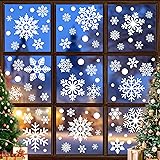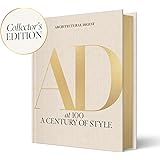Ever found yourself in the middle of a simple home task, like hanging a picture or tightening a loose screw, only to realize you don’t have the right equipment? It’s a common scenario, leaving many of us frustrated and scrambling for makeshift solutions. The short video above serves as a great reminder: having the right tool items in your home can turn those moments of minor DIY disaster into quick, satisfying fixes.
While the video might briefly showcase some tools, understanding which ones are truly essential and how to use them effectively is a different story. Equipping your home with a basic set of reliable home tools isn’t just about tackling big projects; it’s about empowerment, safety, and saving money on small repairs that you can easily handle yourself.
Why Every Home Needs a Basic Toolkit
The argument for having a well-stocked toolbox is simple: preparedness. Life in a home, whether owned or rented, inevitably comes with its share of minor repairs and adjustments. Ignoring a squeaky door hinge or a wobbly chair can lead to bigger problems down the line. However, being ready means you can address these issues promptly, preventing them from escalating.
Think about the cost of calling a professional for every minor fix. A quick visit from a handyman can be expensive, even for a job that takes only a few minutes. On the other hand, investing in a few fundamental essential tools for home can pay for itself many times over. It’s not just about saving money; it’s about the satisfaction of self-sufficiency and knowing you can handle common household challenges.
Beyond the Basics: Empowerment Through DIY
Having tools available also opens up a world of DIY possibilities. From assembling flat-pack furniture to installing new shelves or even painting a room, many home improvement tasks become accessible with the right equipment. This can transform your living space into a true reflection of your style without breaking the bank. While some might shy away from DIY, the initial step of simply having the tools is often the biggest hurdle.
The Absolute Essential Tool Items for Every Home
So, what exactly constitutes an “essential” toolkit? You don’t need a professional workshop, but a carefully curated collection of versatile home tools will cover most common needs. Let’s break down the must-haves:
- Hammer: A claw hammer is indispensable. It’s perfect for driving nails, but the claw end is equally vital for prying them out.
- Screwdriver Set: You’ll encounter both Phillips (cross-head) and flat-head screws. A set with various sizes of each is crucial. Consider one with interchangeable bits for convenience.
- Pliers: A combination of slip-joint pliers (adjustable jaw) and needle-nose pliers (for tight spaces and small objects) is ideal for gripping, bending, and cutting wires.
- Tape Measure: Accurate measurements are fundamental for everything from hanging curtains to ordering furniture. A retractable 25-foot tape measure is a good all-rounder.
- Adjustable Wrench: One or two adjustable wrenches can handle various bolt and nut sizes, eliminating the need for a full set of fixed wrenches.
- Utility Knife (Box Cutter): Extremely sharp and versatile for cutting cardboard, rope, carpet, and opening packages. Always use with caution and a cutting mat.
- Level: For ensuring pictures, shelves, and other installations are perfectly straight. A small torpedo level is often sufficient for most household tasks.
- Stud Finder: If you plan to hang anything heavy, a stud finder helps locate the wooden studs behind drywall, ensuring a secure anchor point.
- Safety Glasses: Non-negotiable for protecting your eyes from flying debris, dust, or chemicals whenever you’re working with tools.
Expanding Your Toolkit: Power Tools for Beginners
Once you’ve mastered the basics, you might consider adding a few entry-level power tools. However, only purchase what you genuinely need. A cordless drill/driver is often the first and most useful power tool for any homeowner. It makes drilling holes and driving screws far less strenuous and time-consuming than doing it by hand. While a corded model offers consistent power, a cordless one provides unparalleled flexibility.
Safety First: Using Your Household Tool Items Responsibly
No matter how simple the task, safety should always be your top priority when using tool items. Simple precautions can prevent accidents and injuries. Always wear safety glasses, even for quick tasks. Understand how each tool works before you use it, and never force a tool if it’s not performing as expected.
Ensure your workspace is well-lit and clear of clutter. Keep children and pets away from your work area. On the other hand, remember that blunt or damaged tools can be more dangerous than sharp, well-maintained ones. Regularly inspect your tools for wear and tear, and replace or repair them as needed.
Organizing and Maintaining Your Home Tools
Having the right tools is only half the battle; keeping them organized and well-maintained is equally important. A dedicated toolbox, tool bag, or wall-mounted pegboard can help you keep everything in its place. This not only makes tools easier to find when you need them but also protects them from damage and rust.
Clean your tools after each use. Wipe down metal parts to prevent rust, especially if they’ve been exposed to moisture. Lubricate moving parts on items like pliers and wrenches periodically. Proper maintenance extends the lifespan of your essential tools for home, ensuring they’re ready for action whenever a project arises. A little care goes a long way in preserving your investment and keeping your tools in optimal working condition.
Ultimately, a well-chosen collection of tool items is more than just a convenience; it’s an investment in your home and your peace of mind. Being prepared for those unexpected fixes and small projects can save you time, money, and a great deal of stress, proving that these essential items are indeed a good thing for every home.











